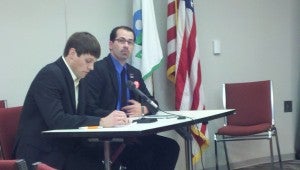Today is a great day for climate progress in America.
Today, the United States Court of Appeals for the District of Columbia Circuit issued a unanimous, strong and clear opinion affirming the Environmental Protection Agency’s (EPA) historic measures to reduce harmful climate pollution.
The court’s opinion held that EPA’s climate protections are firmly rooted in science and the law, and grounded in more than 18,000 peer-reviewed scientific publications.
The court didn’t mince words. The decision says:
EPA’s interpretation of the governing CAA provisions is unambiguously correct.
Even sharper was this part of the decision, in which the court noted that EPA properly relied on comprehensive scientific assessments by authorities such as the National Academies of Science and the Intergovernmental Panel on Climate Change:
This is how science works. EPA is not required to re-prove the existence of the atom every time it approaches a scientific question.
(Read more on EDF’s website, in our press release and our highlights page, and in our Texas Clean Air Matters blog)
But even in the wake of a compelling court opinion, some continue to focus on the politics of delay, deny and obstruct.
Responding to the court’s decision, a representative of the National Association of Manufacturers indicated today that it will continue to invest in lawyers and lobbyists to block clean air progress, telling AP:
[w]e will be considering all of our legal options when it comes to halting these devastating regulations.
Fortunately, there are many more who are investing in America’s future. Business leaders, numerous states, and policy makers are working together to reduce harmful carbon pollution.
America’s automakers defended EPA’s common sense measures to make our cars more efficient, which will save families’ hard-earned money at the gas pump, help break our addiction to imported oil, and reduce climate pollution.
In filings in federal court, the Alliance of Automobile Manufacturers and the Association of Global Automakers have characterized these important standards as:
valid, mandated by law, and non-controversial.
Similarly, a dozen states – California, Delaware, Illinois, Iowa, Maine, Maryland, New Mexico, New York, Oregon, Rhode Island, Vermont and Washington – have intervened in defense of EPA’s clean car standards.
And small business voices spoke out today in support of EPA’s clean air measures, saying these measures:
are strongly supported by small business owners because they will boost their bottom lines and help secure our nation’s position in the emerging clean energy economy.
The court’s decision today reaffirms that a strong, diverse set of voices stand ready to work together, building from the bedrock foundation of this historic decision to reduce climate pollution and build a stronger America.
Our EDF experts are poring through all 82 pages of the decision. Stay tuned for more in-depth analysis about what it means, and where we go next.
But for right now, we should all take a moment to celebrate this great news.











